Dr. SHI Ye: Continuing ZJU’s legacy of seeking truth
[Editor’s Note: Dr. SHI Ye, Assistant Professor at ZJUI, obtained his BS and MS degrees in Polymer Science and Engineering from Zhejiang University under the supervision of Prof. CHEN Hongzheng. He then received his Ph.D. in Materials Science and Engineering from the University of Texas at Austin under the supervision of Prof. YU Guihua. Before joining ZJUI, he worked as a postdoctoral researcher at Caltech and UCLA. Dr. Shi is interested in soft materials, particularly new dielectric elastomers and functional hydrogels, and their applications for soft actuators, soft robotics, energy conversion/storage, and wearable devices. He has published more than 30 papers in top research journals, such as Science, Nat. Nanotech., Nat. Commun., Adv. Mater., Adv. Funct. Mater., Nano Lett., Chem. Soc. Rev., Acc. Chem. Res. He also has a strong focus on the commercialization of his research findings.]
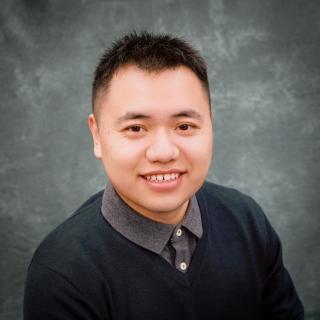
A return to ZJU to continue the legacy of seeking truth
Last July, Dr. Shi was first author of a research paper published in Science, “A processable, high-performance dielectric elastomer and multilayering process”. The paper explores the synthesis of new high-performance dielectric elastomer materials and introduces a new process for producing multilayering devices (Figure 1). This could lead to a breakthrough in research on artificial muscle tissue. The corresponding author is Prof. PEI Qibing at the University of California, Los Angeles.
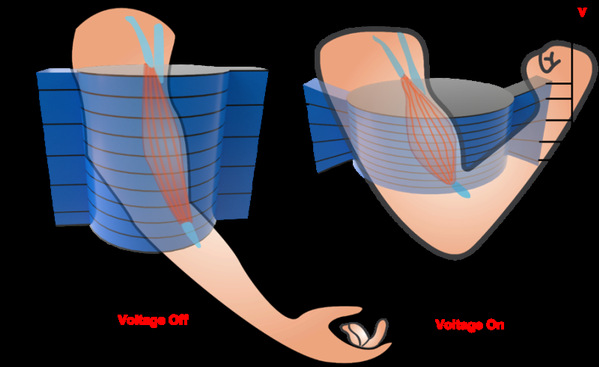
Figure 1
Thinking about his formative years at ZJU, Dr. Shi reflected that he has been deeply influenced from very early on by President Chu Kochen’s “Seeking Truth”. Citing President Chu, he commented, “the best manifestation of Seeking Truth can be found in The Doctrine of the Mean (Zhong Yong): learn extensively, inquire prudently, reflect carefully, discriminate clearly, and practice earnestly. This sentence has been a beacon lighting the road ahead on my research journey,” said Dr. Shi. He recalled that when he first did research as an undergraduate student, he was sometimes overly dependent on prior research, assuming that the methodologies proposed in that research must lead to the results promised. During that period, he blindly followed prior approaches and ignored investigating the underlying reasons when his results deviated from those of previous researchers. With the help of his advisor Prof. CHEN Hongzheng and some of his peers, he realized the dangers of that follower mindset and learned the importance of “inquiring prudently, reflecting carefully, discriminating clearly.” Now, Dr. Shi never hesitates to pass on to his students his thoughts on doing research, which all bear the hallmark of “Seeking Truth”. “Put on a critical lens to benefit from previous research. Analyze conscientiously the results obtained from your experiments. If your results differ from those of previous studies, inspect the experimental process and conditions thoroughly, and further expand your reading scope to find ideas that can facilitate your analysis. All those steps are necessary to come to a valid conclusion,” said Dr. Shi.
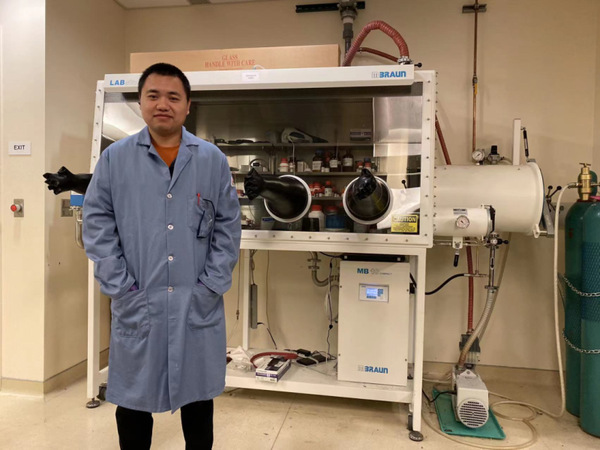
When asked about why he chose to return to China rather than take up one of the many enticing opportunities abroad, Dr. Shi answered, “honestly, the decision to return was made before I left. I have always been sure about returning to Zhejiang University. This is not only because of my bond with Hangzhou, my hometown, but also my deep attachment to Zhejiang University.” He always holds his ZJU memories dear. Abroad, Dr. Shi felt an even stronger calling to go back to ZJU. He contends that compared with distinguished universities abroad, ZJU has a similar first-class environment, top research facilities, a strong academic atmosphere, and a strong program of international exchanges. In addition, ZJU can provide opportunities that foreign universities cannot offer, such as direct participation in the development of Chinese society, direct cooperation with Chinese enterprises and the direct opportunity to nurture Chinese students to excellence. “As a Chinese, the dream to return to China haunted me day and night. This dream is presumably shared by lots of Chinese scholars overseas.” said Dr. Shi. “I once mentioned to an American peer researcher and friend that I had graduated from Zhejiang University. He said that he knew Zhejiang University and the city of Hangzhou and that they were both beautiful. He showed a strong desire to do what he loves in a place like ZJU. We are totally like-minded on this issue. It is truly a joy.”
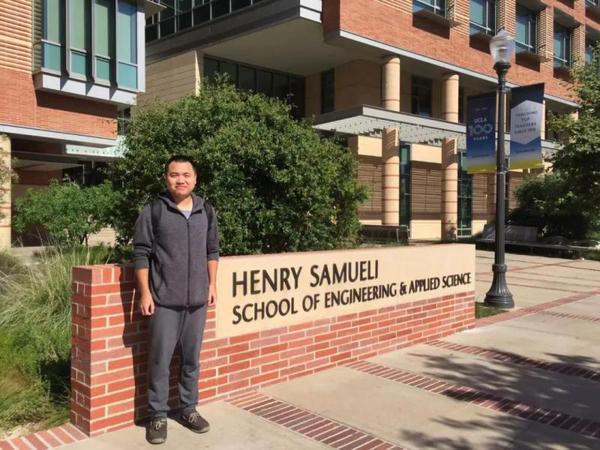
When it comes to his experience as a faculty member at the International Campus, ZJU, Dr. Shi commented, “as a newcomer, something special I have noticed here is that one must get one’s hands dirty to establish a lab. What also attracts me is the robust interactions between the faculty and undergraduate students, which naturally leads to the active participation of undergrads in my research.” He also noted, “The campus provides superb facilities. I am particularly impressed by the flat organization on campus. The compactness of the campus makes it easier for staff, faculty, and students to move around it. Like Caltech, where I worked previously, a smaller campus size allows more opportunities for people to meet and exchange ideas, like discussing scientific issues with experts from different backgrounds.”
Searching for solutions by observing tiny everyday clues
While studying dielectric elastomers (DEs), Dr. Shi struggled with how to perfectly stack the highly elastic thin films with sticky surface layer by layer, without introducing bubbles or crumples. Surprisingly, the final solution was inspired by the process of applying cellphone screen protectors. I watched many videos online of people installing screen protectors, tried to learn how to avoid bubbles and wrinkles by observing the techniques used. At the same time, I also thought about the effect of differences in the mechanical properties of the screen and the screen protector during the stacking process. Due to those efforts, a long-standing problem plaguing the field of dielectric elastomer research was creatively solved with a breakthrough in the stacking method, inspired by cellphone screen protectors.
DEs have the advantages of large deformation, high energy density, and fast response speed. Therefore, they are widely used as artificial muscle materials. A dielectric elastomer actuator (DEA) is made by a DE film sandwiched between two compliant electrodes. When a voltage is applied, the electric field generates Maxwell stress, compresses the film in the thickness direction, and expands it in area.
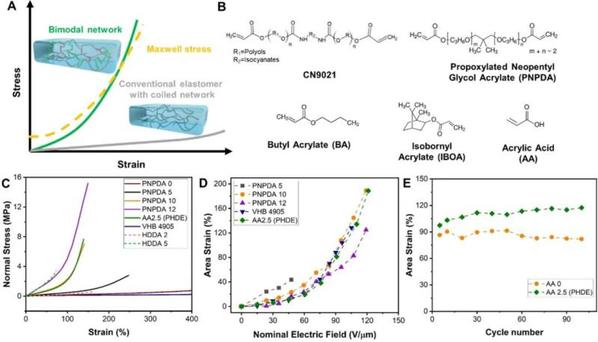
Figure 2
Dr. Shi and his colleagues designed a new type of processable, high-performance dielectric elastomer (PHDE). Addressing the defects of two commonly used dielectric elastomer materials, the team built a bimodal-networked elastomer using two cross-linkers with different chain lengths (Figure 2). This material can be compressed and stretched flexibly under electric stimuli, just like the Golden Cudgel, the weapon wielded by Sun Wukong in the Chinese classic Journey to the West. Additionally, Dr. Shi and his team introduced a small number of additional hydrogen bonds into the network, which reduces the viscoelastic loss and increases its response speed.
Dr. Shi’s team also developed a dry stacking method to produce multilayered DEAs (Figure 3). Compared with traditional wet stacking methods, this method has the advantages of high efficiency, compatibility with large-scale production, high yield, and low loss of performance. The multilayered actuators have shown very promising results in tests, demonstrating the potential of PHDE in various applications such as soft robotics, biomedical devices, and wearable devices.
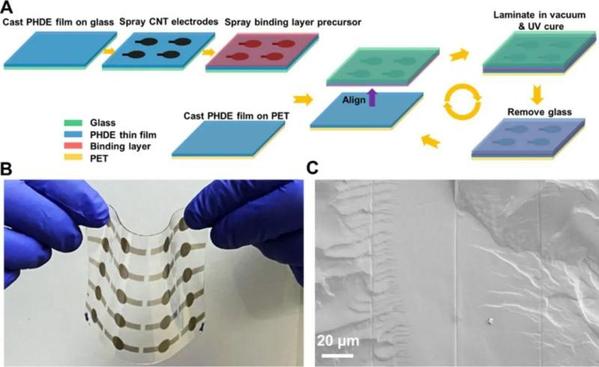
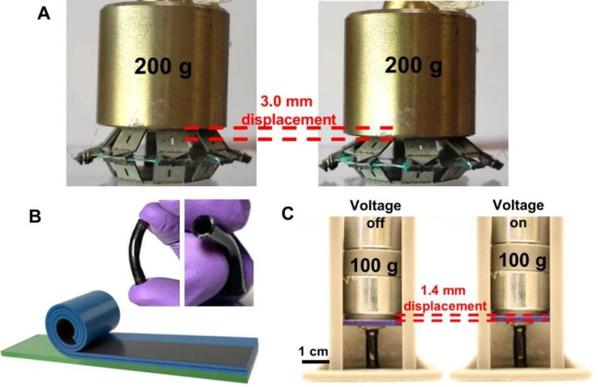
Figure 3
“A good researcher must be a diligent thinker with an analytical mind and the ability to plan ahead,” commented Dr Shi. As a materials chemist, he values experiments. “I do not spend the majority of my time in the lab, but I do spend a huge amount of time thinking about that. Every night before I fall asleep, I lie in bed reflecting on the results from the lab that day and planning for the next day. I rehearse the steps in my mind, including lots of details, like playing a film.” During the periods when he pursued his Ph.D. and worked as a post-doc, Dr. Shi usually returned home from work around 5 or 6 p.m., which did not prevent him from making full use of time to think. During pockets of time, such as when he bathed his baby, Dr. Shi was still thinking about research. It is via this habit of thinking that he has achieved maximum productivity.
This habit of thinking helped him even more during the epidemic. At a crucial stage of his research, although the ban on lab access was lifted at UCLA, only a limited number of people were allowed in the lab at one time, which allowed Dr. Shi to work only half of each day until he left for China. This was a big challenge for materials chemistry research, which relies on experiments. Dr. Shi recalls, Within only half a day, I had to finish preparing materials, setting up devices, and running scheduled tests. If I could not complete these steps at once, a huge workload of labeling and storing samples awaited me. Without years of practice of thinking and planning ahead, my research schedules might have failed in a situation like that.
Looking to the future, Dr. Shi said, “I want to be a good researcher to work on the topics I feel passionate about, as well as a good educator who can deliver lessons that are satisfying for students. I believe that the International Campus will not only develop into a hub where scholars from east and west exchange ideas, but also become a place which trains students to have open and flexible minds.”
Source: Zhejiang University-University of Illinois at Urbana-Champaign Institute (the ZJU-UIUC Institute, ZJUI)